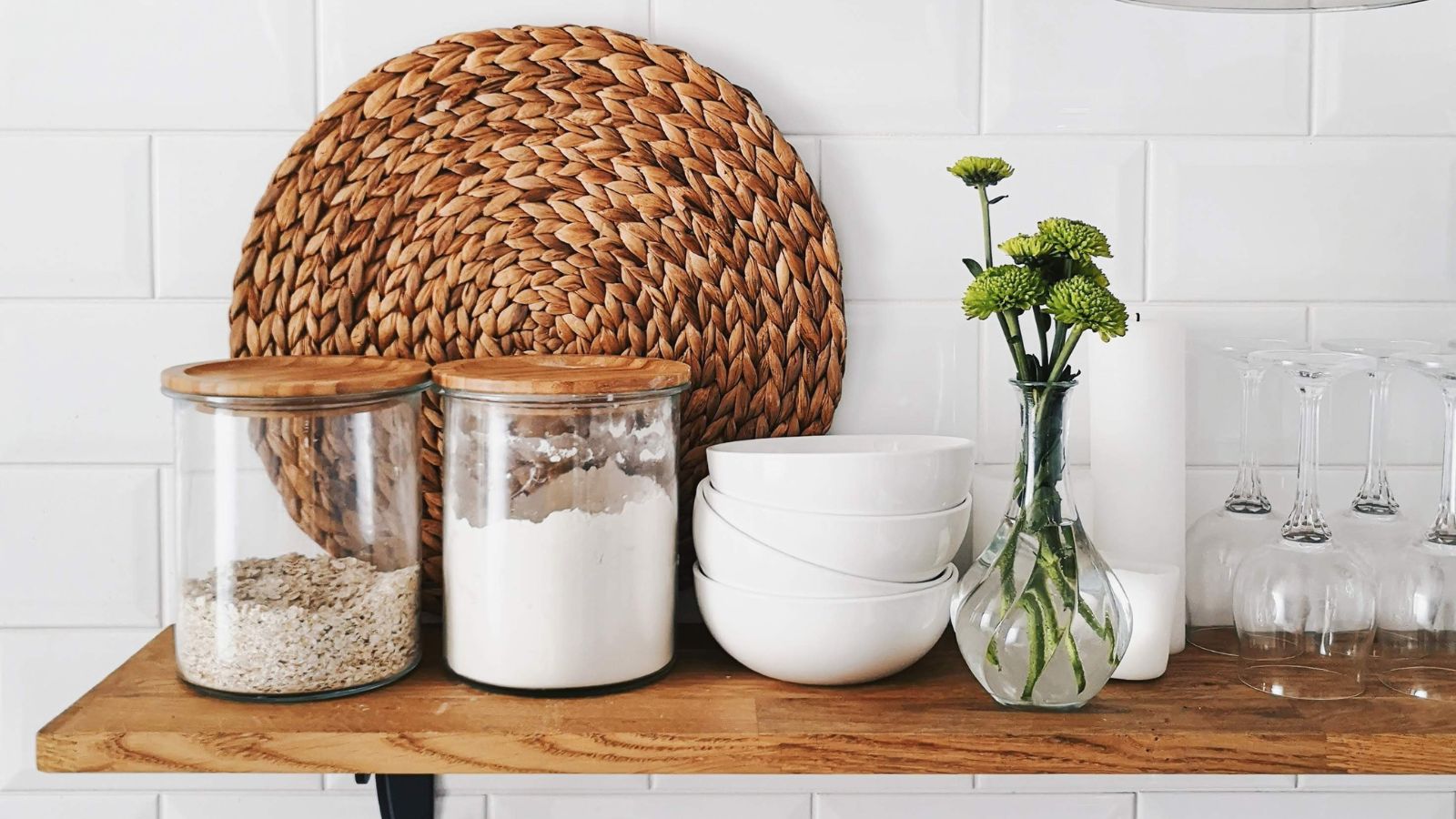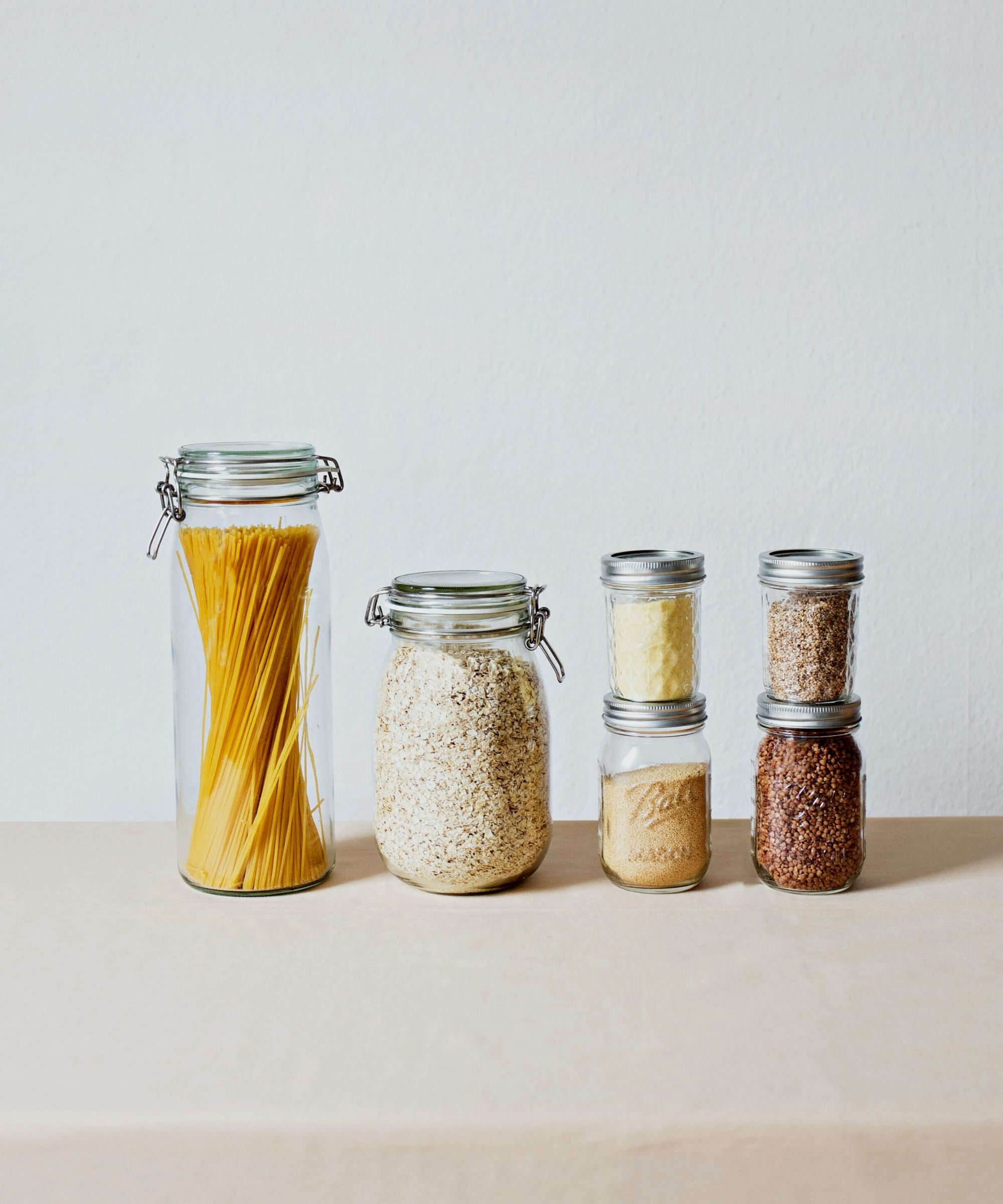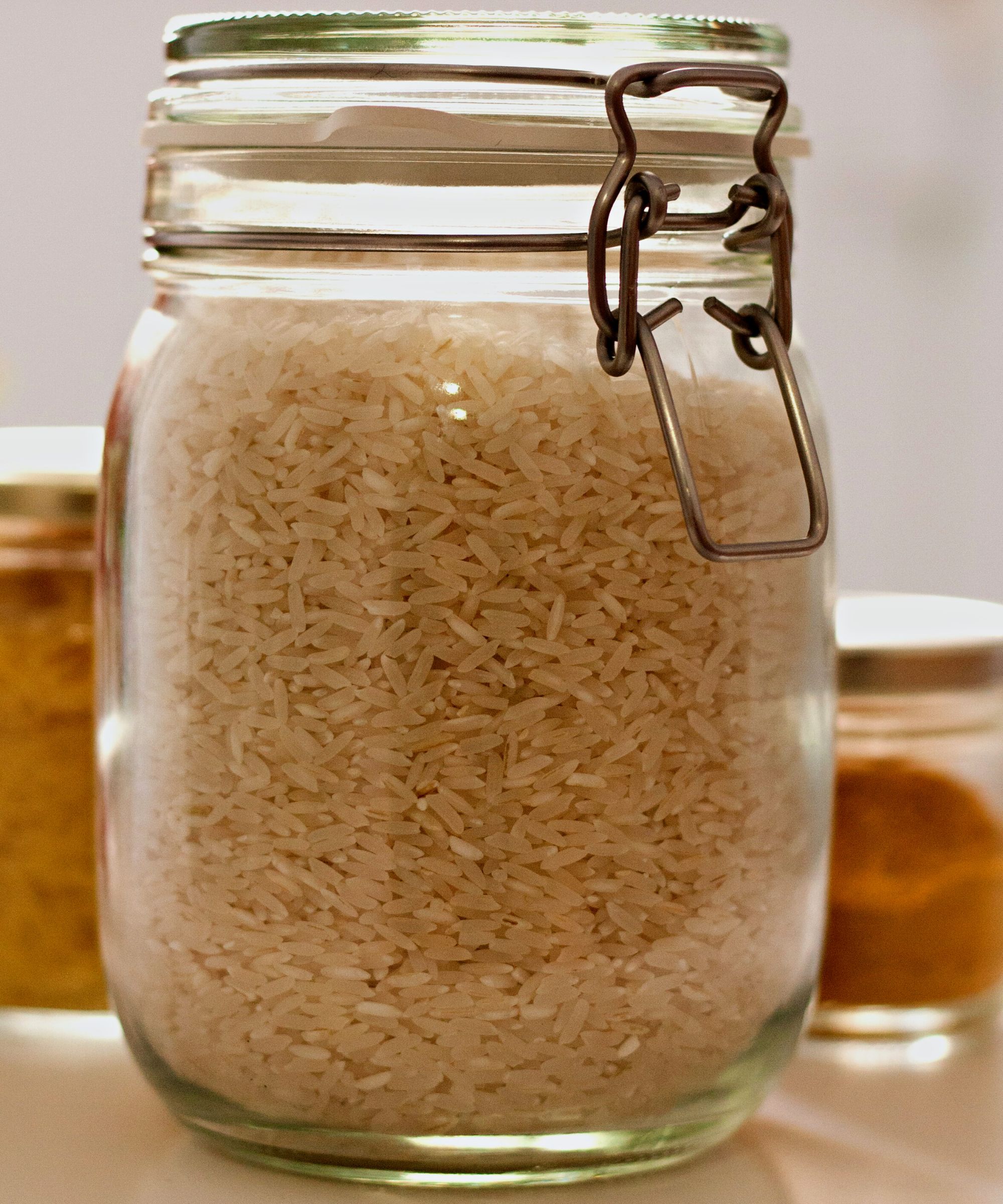I started decanting my food goods – here's why I think you should too
What started as a decor choice has now become an organization staple in my kitchen


When I first saw people decanting food into uniform jars for their kitchens I wondered what all the fuss was about. It seemed almost pointless to move food from one container to another just for the sake of aesthetics. It wasn’t until I tried it for myself that I found decanting food goods also help to keep foods fresher for longer, as well as make organization easier.
Before, organizing a kitchen was a bit of a battle. Trying to fit different-sized boxes, jars, and containers into my standard-sized shelves always left them looking messy and things just as difficult to find as before. Decanting easily solved this problem, however.
Why I started decanting my food

Despite my skepticism, I began decanting my food after I saw how much easier it made organizing kitchen cabinets and how much prettier it could make my kitchen countertop ideas. Admittedly, taking food out of one perfectly good box to put into another jar felt a bit trivial, however, I could not deny how much more professional my kitchen ideas began to look after just a few replacements.
1. I found that my food was far fresher
I had taken the plunge and bought some sleek-looking glass jars with bamboo lids much like these top-rated jars on Amazon so that I could introduce some uniformity to my space. What I didn’t expect, however, was how the seal meant that food stayed much fresher for longer – even dried goods such as pasta and rice – things I had no idea could be affected by an improperly sealed box.
Adding proper, eco-friendly food containers to my home meant that I was throwing less food away due to it going stale.
2. I suddenly had more space
Although adding stuff to my cupboards doesn't sound like it would save a whole lot of space, I discovered that uniform containers, chosen specifically to fit my kitchen storage ideas and contain certain foodstuffs meant that I had more space on my shelves in the end. Removing excess packaging meant that my storage was neat, and tidy, and had no visual clutter meaning I was able to find things I needed quickly.
What’s more, when I had purchased something to top up an existing supply, I could easily add them to one big container altogether rather than have two different packages of the same thing.
Design expertise in your inbox – from inspiring decorating ideas and beautiful celebrity homes to practical gardening advice and shopping round-ups.
3. I could easily see what I needed to buy more of
The benefit of decanting food into clear jars from opaque packaging meant that I could see what items I needed more of.
There was nothing more frustrating in the past than opening a packet of cereal only to find that I barely had enough left for breakfast. With clear containers, I could easily see what I needed as I wrote out my weekly shopping list.
How to decant food properly

When I first started decanting food, I certainly made a few mistakes. Decanting the wrong things, for example, meant I had used containers on items that didn’t really need them – often resulting in taking up more space or meaning I emptied a jar every time I used it and needed to top up daily.
Here is what I learned:
1. Decant the right items
One rule I follow is to decant items I know I will not use a whole package of in one go. For example, as a keen baker, I like to decant my flour and sugars and so on along with pasta, rice, and lentils. These are all items that I have in my kitchen all of the time and will always need a container for, and I am unlikely to empty them in one go.
Multi-packs of items are also good to decant into nicely stacked tubs or baskets inside of my kitchen drawers as a great way to cut down on bulky bags and help organize kitchen drawers expertly.
I do not decant things such as bags of chips or pre-made mixes. I typically use these packages up in one go or infrequently stock them in my pantry making spending money on jars for these unnecessary. You will know what your family uses the most and what is most important in your kitchen, however.
2. Invest in good quality sealed containers
While containers can be expensive, they are a worthy investment if you want to save money on food waste and prevent becoming frustrated with your kitchen's storage layout. I personally believe that jars and containers bought specifically to suit the products you buy and the size of your storage are some of the best kitchen organizers you can purchase.
Measure your space before buying containers, especially if you have small kitchen storage ideas and space is of the utmost importance. I also pick containers based on the volume of what is going on in them. For example, I know that the container I need to store flour will have to be larger than a container for powdered sugar, as the products are sold in different sizes.
3. Remember to label and date containers
Once a food item has been transferred to its new container, I use my label maker (which is similar to this Bluetooth label maker on Amazon) to add the name of the product to the outside of the jar. While it may seem silly to label a glass jar you can see inside, when it comes to similar-looking items such as bread flour and all-purpose flour, it is important to not mix the ingredients up.
I also use a wipeable pen to add the expiry date to the base of the jar. This way I never use any decanted item after it has gone past its best.
Why do people decant things?
There is a range of reasons why people decant things around their homes. In the kitchen, decanting dry goods such as rice, pasta, and so on can be done to help keep items fresher for longer or to help organize kitchen cupboards more effectively. Decanting items that will be left on the counter may also be done to improve the look of your kitchen on the whole by using functional items as decor.
Should you decant condiments?
Whether or not you decant condiments is down to personal preference and the aesthetics of your kitchen. Condiments, unlike most dried goods, already come packaged in sealable containers such as bottles and jars and can be kept out of sight in cupboards, pantries, or the refrigerator, making decanted condiments more of a stylistic choice than a practical one.

Chiana has been at Homes & Gardens for two years and is our resident 'queen' of non-toxic living. She spends most of her time producing content for the Solved section of the website, helping readers get the most out of their homes through clever decluttering, cleaning, and tidying tips. She was named one of Fixr's top home improvement journalists in 2024.